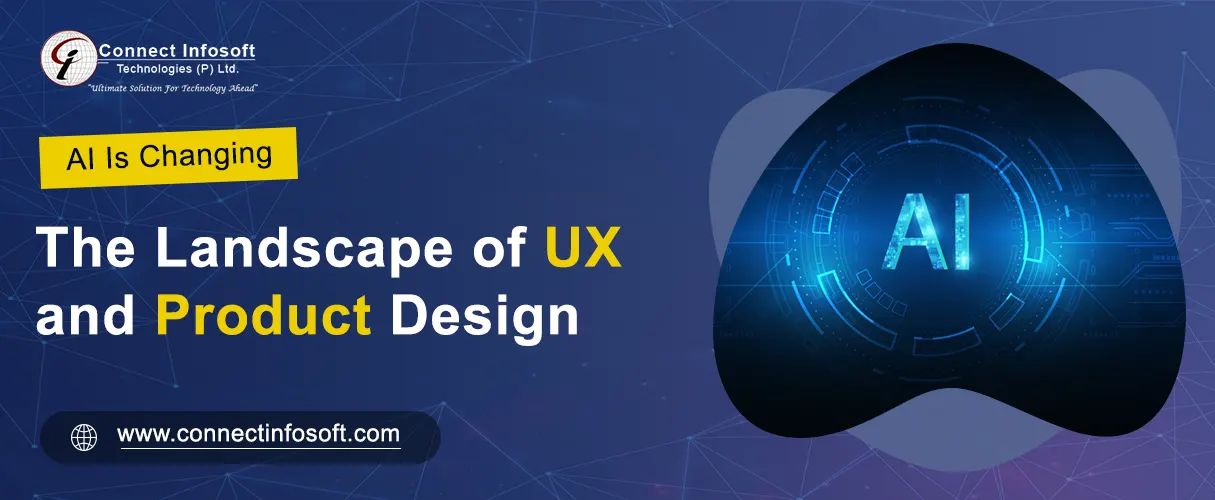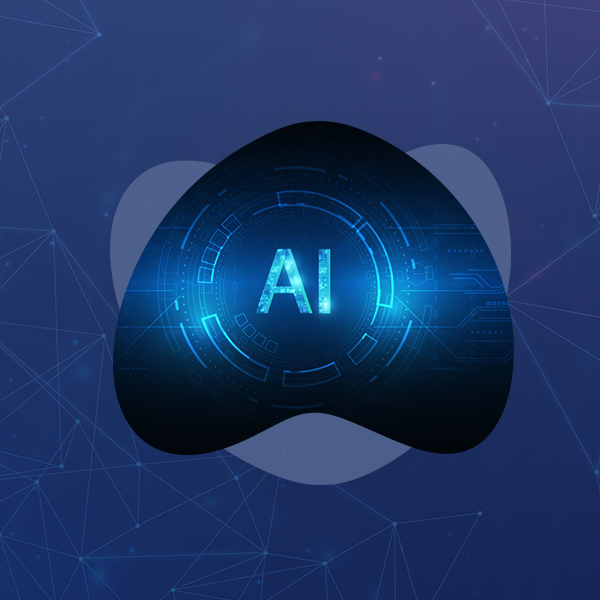How AI Is Changing the Landscape of UX and Product Design

Introduction:
AI has emerged as a game changer, altering domains such as product design and user experience, and revolutionising how goods are generated and delivered across multiple industries.
AI has transformed several disciplines, including product design and user experience. AI is revolutionising how goods are imagined, created, and delivered, from autonomous vehicles and medical devices to home technology and e-commerce. goods may be personalised, predictions based on user behaviour can be formed, and design processes can be automated by incorporating AI into the design, resulting in more efficient, inventive, and user-centered goods. Nonetheless, issues like as data privacy and bias must be addressed when using AI in design processes.
We will look at the enormous impact of AI on the fields of UX and product design. We will look at the benefits and challenges of incorporating AI into design processes, the critical role of AI in the design workflow, the latest trends in AI-powered products, and the potential future of AI in the world of design.
The Integration of AI in UX and Product Design:
The integration of Artificial Intelligence (AI) in UX and product design has revolutionized the way we create and optimize user experiences. AI technologies bring advanced capabilities such as natural language processing, machine learning, and predictive analytics, which can greatly enhance the overall usability, personalization, and efficiency of digital products.
By leveraging AI, UX and product designers can gather valuable insights from user data and behavior, enabling them to make more informed design decisions. AI-powered analytics tools can analyze large datasets and provide designers with actionable recommendations to improve user experiences. This data-driven approach helps create products that are tailored to users' needs and preferences.
AI also plays a significant role in improving personalization. By utilizing machine learning algorithms, designers can create intelligent systems that adapt and customize the user experience based on individual preferences and behavior. AI-powered recommendation engines can provide personalized content, product suggestions, and user-specific interactions, creating a more engaging and relevant experience for users.
Furthermore, AI can automate repetitive and mundane tasks, freeing up designers' time to focus on more strategic and creative aspects of their work. AI-powered design tools can generate design variations, automate prototyping, and perform rapid usability testing, allowing designers to iterate and refine their designs more efficiently.
However, integrating AI in UX and product design requires careful consideration of ethical and responsible design practices. Designers must ensure that AI systems are transparent, fair, and unbiased. They should prioritize user privacy and data protection, implementing mechanisms to obtain user consent and securely handle sensitive information.
How AI is being used in the design process/product design:
Artificial Intelligence (AI) has become an indispensable tool in the design process and product design, offering innovative solutions and improving efficiency. Here are some ways AI is being utilized:
1. Design Automation:
AI-powered design tools can automate repetitive tasks, such as generating design variations, resizing elements, or creating templates. This automation saves time and allows designers to focus on more strategic and creative aspects of their work.
2. Data-Driven Insights:
AI algorithms can analyze vast amounts of data, including user behavior, preferences, and market trends. Designers can leverage this data to gain valuable insights, identify patterns, and make informed design decisions that align with user needs and preferences.
3. Personalization and Customization:
AI enables designers to create personalized experiences by harnessing machine learning algorithms. By analyzing user data, AI can deliver tailored recommendations, content, and interfaces, providing a more engaging and relevant experience for each user.
4. Prototyping and Testing:
AI can accelerate the prototyping and testing phase of the design process. AI-powered tools can generate interactive prototypes, simulate user interactions, and perform rapid usability testing, allowing designers to iterate and refine their designs more quickly and efficiently.
5. Design Assistance:
AI can assist designers by suggesting design elements, layouts, and color schemes based on predefined design patterns or user preferences. It can provide real-time feedback, recommendations, and suggestions, helping designers make informed design choices.
6. Enhanced User Experience:
AI enables designers to create more intuitive and user-centric experiences. Natural language processing and machine learning algorithms can power conversational interfaces, voice interactions, and chatbots that understand user intents and provide relevant and helpful responses.
7. Generative Design:
AI algorithms can generate new design concepts and solutions based on predefined parameters and constraints. This ability to explore and create innovative design options can inspire designers and push the boundaries of creativity.
Conclusion:
AI is transforming the design process and product design by automating tasks, providing data-driven insights, enabling personalization, streamlining prototyping and testing, offering design assistance, enhancing user experiences, and fostering creativity. As AI continues to advance, its integration in design promises to revolutionize how designers create, innovate, and deliver exceptional user experiences.


